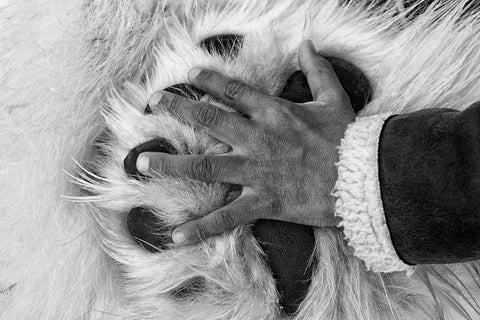Carsten Egevang is an award-winning photographer and visual storyteller focusing much of his 25 year career on the ever-changing conditions of the Arctic region.
His ambition is to capture the remarkable adaptation of life to Greenland's harsh environment whilst documenting the dramatic changes that are taking place in the Arctic. Carsten's stunning images help us to not only appreciate the uniqueness of the indigenous culture in Greenland but also the fragile interconnectedness of all things.
Wild Spaces: Give us a brief description of your journey to becoming a professional photographer.
Carsten Egevang: I feel a strong urge – an obligation – to communicate my fantastic Greenland experiences to a broad audience. The natural beauty of Greenland is unparalleled but the Arctic environment is also extremely vulnerable. I’ve been working many years as a researcher in Greenland and have a PhD degree in Arctic Biology. Today, I combine photography with my scientific background and field experience to share details of this wonderfully complex environment.

How have the last 12 months been for you? How has COVID affected your work?
The past 12 months have been a challenge for me as a photographer, primarily because the COVID situation has prevented me from travelling to Greenland. A positive outcome of the long period with travel restrictions, has been that I have found time to work on book projects on my computer.
What project are you most proud of and why?
I am particularly proud of the QIMMEQ project on the Greenland Sled Dog and the culture connected to them(read here). I usually work alone when photographing in Greenland, but this project had more than 20 dedicated participants working together to communicate every aspect of the amazing Greenland Sled Dog. My images generated the visual profile of the project and were distributed through various channels including a coffee table book, realesed in March 2020.
Who or what has inspired you most during your career in photography?
In few other places in the world is the connection and dependency between people, animals and the surrounding environment as strong as in Greenland. Here, life is on the edge of what is physically possible! Only species that are adapted to the extreme climate can survive here. Only the people who can decode nature's signs and predict the weather can find food in this arctic desert. The landscape and culture in Greenland has inspired me throughout my career.

It feels like a pivotal time for the natural world - are you optimistic or pessimistic? Where do you think we’ll be in 2050?
I must say that I’m not feeling particular optimistic for the natural world. The loss of biodiversity and natural sites are taking place at an alarming pace. The effect of climate change is deeply worrying, especially in the Arctic. We have the knowledge and technology to change the destructive course we are on – but seemingly lack the will to do so!
What are the most important changes that can be made to support the natural world?
This is an extremely complex question to answer in short. I think we need to make changes at all levels – both locally and internationally – even if it means a reduction in present living standards.
What projects do you have planned for 2021?
I plan to travel to East Greenland and spend significant time there in 2021 documenting the wildlife as well as the day-to-day living of the traditional Inuit culture.

How do you relax away from work?
I stay physically active and try to avoid spending too many hours in front of my computer. I like to do kickboxing and am a qualified instructor, although I'm probably too old now!
Which artists / photographers do you admire and why?
I have many photographers I admire both within traditional wildlife photography and documentary photography. The single photographer that has inspired me the most has to be Ragnar Axelsson from Iceland! On top of being an excellent photographer, he is just a nice guy that I have had the privilege to work with on several occasions.
Finally, what is your favourite book and do you have any you’d like to recommend?
The book Last Days of the Arctic by Ragnar Axelsson changed my photography for good. This book is the main reason why I photograph in black and white today. When the book came out in 2010, I suddenly saw the Greenland I knew so well, portrayed without color! This changed my mindset and inspired me to go down the black and white route – and I have not looked back since.

Check out Carsten's stunning collection from Greenland here.